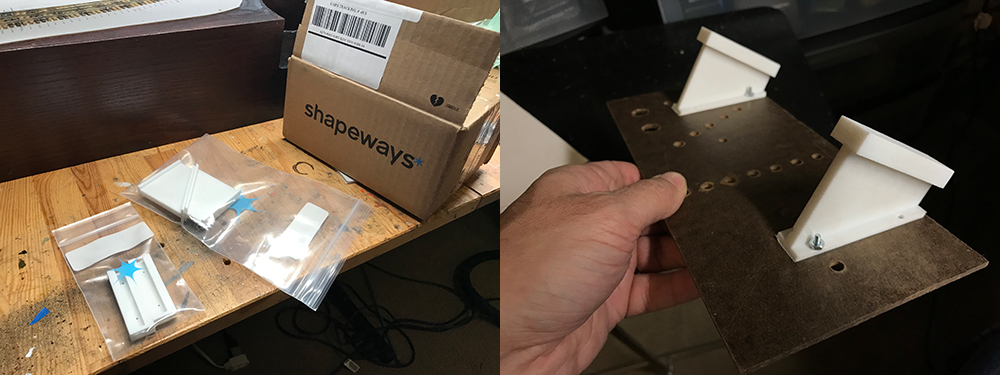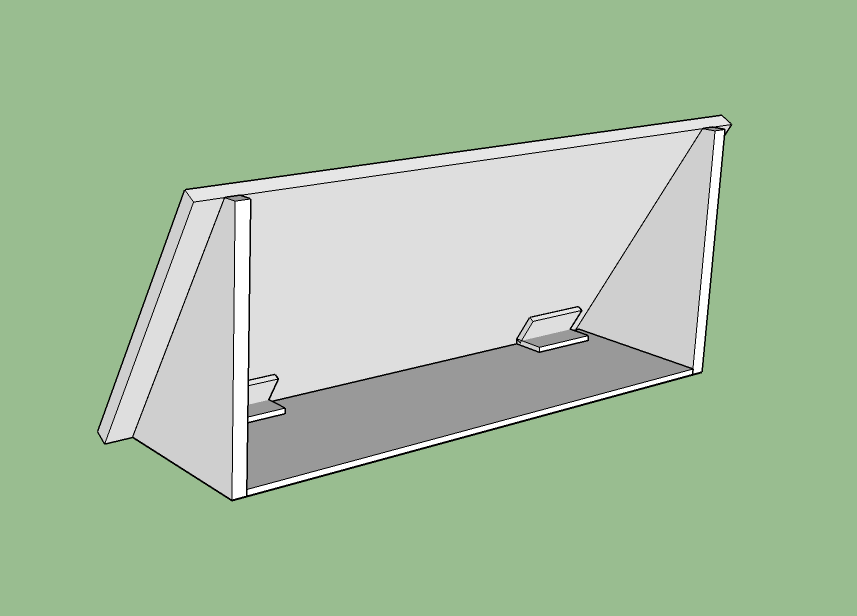
Just a quick note to those wondering where I have gone. Still here but taking a break from the hobby to deal with life events. I spent the last two and a half years working as a sub-contractor (software architect) for Visa. That contract ended last September but while I was out of the marketplace I hadn’t realized how much of my bread and butter work had been automated as well as off-shored to foreign developers. When I came out of my contract many of my previous clients had begun using automated web-building services – leaving me without work! Continue reading “Still here”
Trees
It’s been a while since my last post. I was so exhausted by the wiring project that I decided to give myself a break and focus on other things. I normally obsess over the details of the hobby and it was nice to really just take some time away from it to do other things such as become a better drummer, go for a drive, hikes, bike rides etc. Only one time did I spend a weekend do ‘train’ stuff and that was a weekend of train-chasing in the Sierras.
DC Wiring Part 3 – Turnout motors
With the two/three buses now fitted and powering all the track it was time to start fitting the turnout motors. I decided to use Circuitron Tortoise switch machines and purchased a set of six from Ebay. I paid around $16 per motor.
DC Wiring Part 2 – Powering the track continued
Well I finally finished the wiring to power all the track. The two separate sections (the branch line and the traction freight line) are controlled from their own SPST switches. The crossovers required a little thought and in the end I came up with a couple of schemes to wire them up. I created a third bus not connected to either of the other two sections. The crossovers will always be on and are directly connected to the throttle. In order to control the frog poles I connected them to a DPDT switch and simply flip the switch to power the correct frogs for either direction.
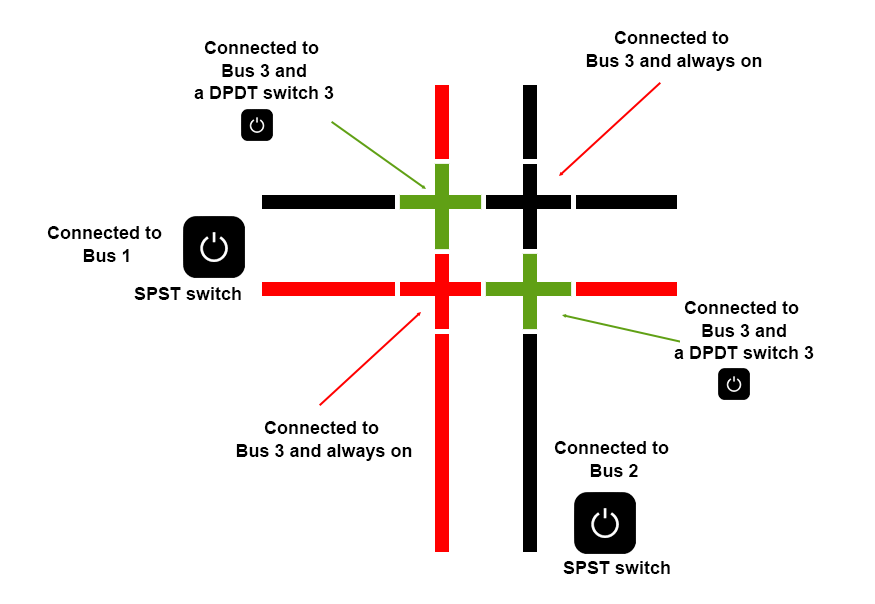
Continue reading “DC Wiring Part 2 – Powering the track continued”
DC Wiring Part 2 – Powering the track
Having finished isolating track the task was now to start powering the trackwork. There are going to be three independent DC systems:
- Powering the sections.
- Powering the turnouts.
- Powering any lights and accessories around the layout.
Before starting wiring I decided to clean up some of the track. I polished down many of the solder joints but importantly I filled in the gaps in the PCB ties and the gaps in the rails in the crossovers.
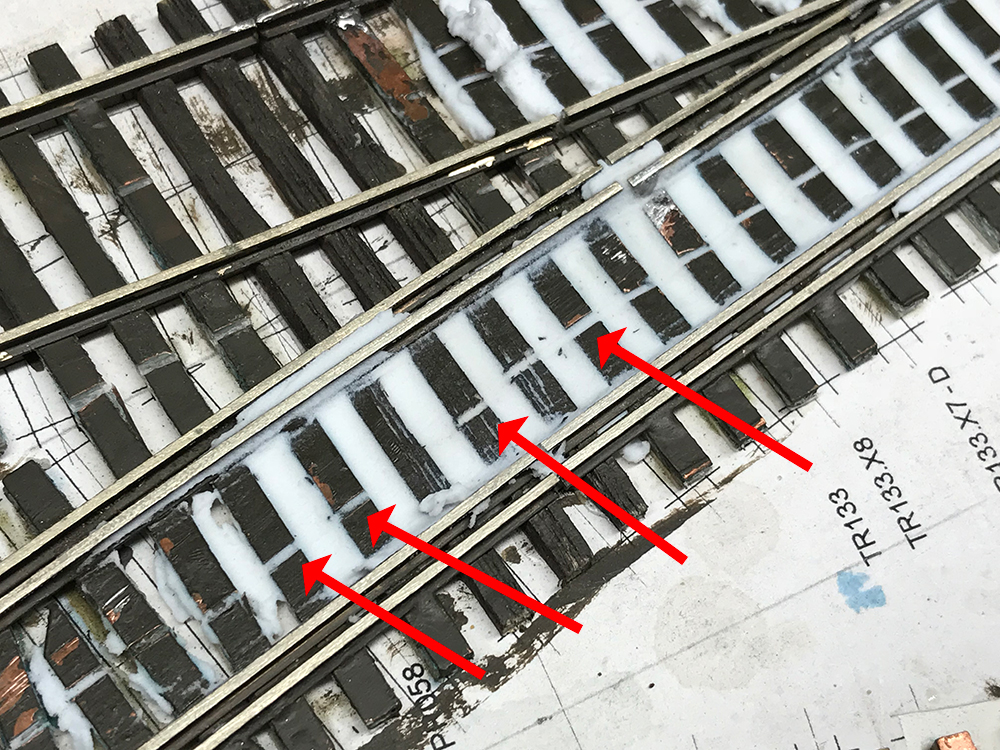
DC Wiring Part 1 – Lay track and isolate sections – Crossovers
Back to the project afer a short break. I continued to lay missing sections which I then isolated followed by the turnouts and finally the crossovers.
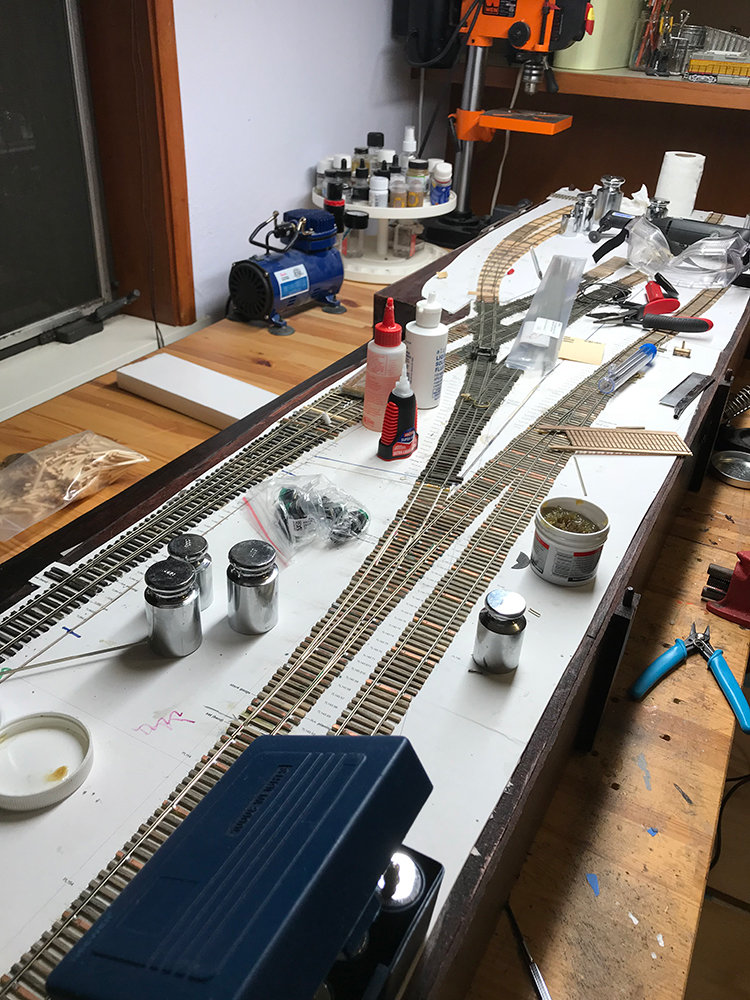
Continue reading “DC Wiring Part 1 – Lay track and isolate sections – Crossovers”
DC Wiring Part 1 – Lay track and isolate sections
Now that the control panel has been designed and fitted I have begun the wiring. The steps are basically:
- Lay missing sections of track.
- Isolate rails .
- Connect sections to the control panel.
- Wire up the crossovers and connect them to the control panel.
- Add the turnout motors and connect them to the control panel.
- Add three docks to the exit points for the removable cassettes.
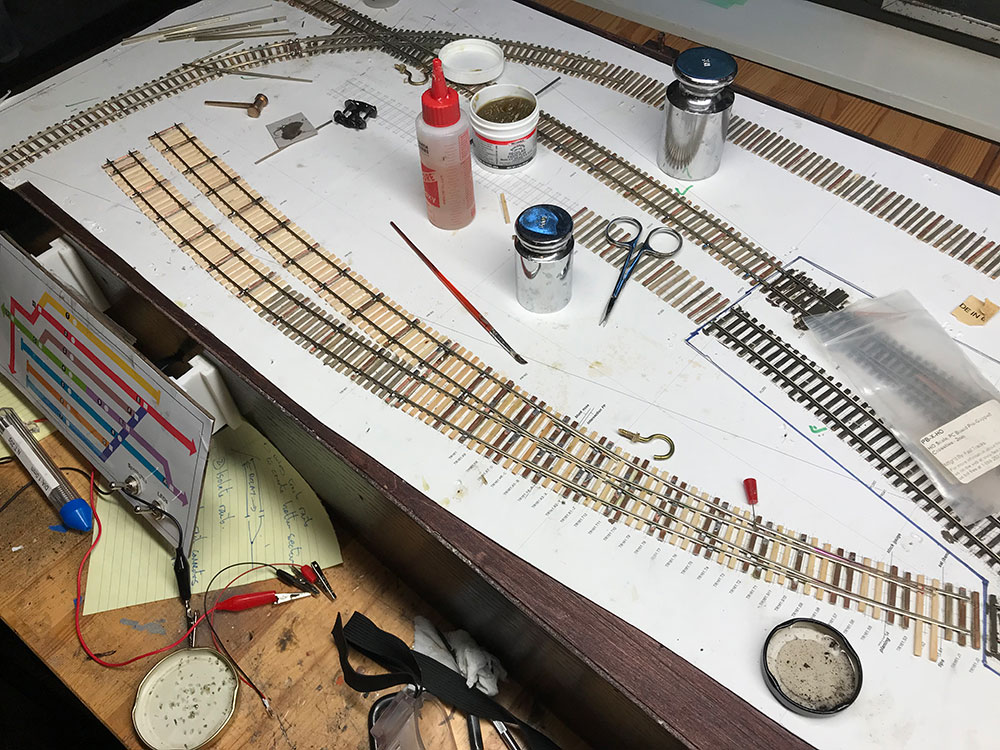
Continue reading “DC Wiring Part 1 – Lay track and isolate sections”
Control Panel
My brackets arrived from Shapeways and I waited no time to fit them. They are made of very tough plastic that called strong white and flexible. From the Shapeways site:
This material is incredibly versatile, and can be used for a wide variety of applications, from iPhone cases to jewelry, remote controlled quadcopters to wearable bikinis. When thin, it’s flexible enough for hinges and springs. When thick, it’s strong enough for structural components.
There was no doubt that the brackets were going to do a good job. My task was to sand them down so that the controller attachment slid nicely and easily into the board attachment.
AC system
I managed to set up the internal AC electrical system which provides power to the DC adapter/s and the lighting system. I built the lighting system a while ago but had housed the switches in an ugly box that protruded from the front. I removed this and have now located the switches on the control panel.
I’ve covered the lighting system in the past but as a quick reminder here are some pics of the process:
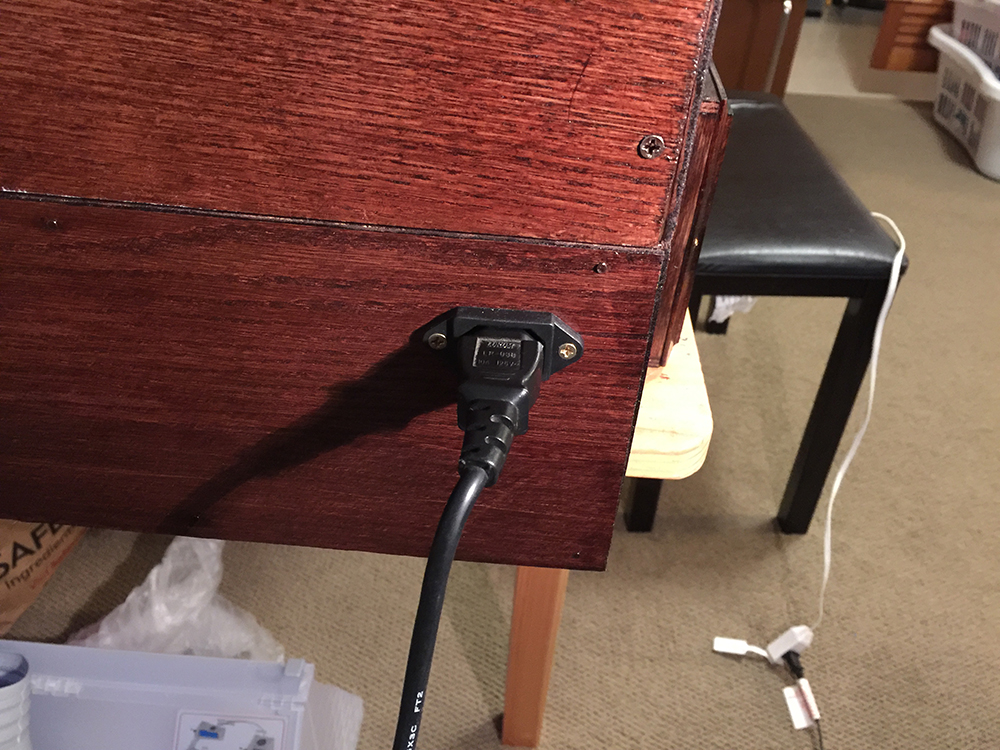
New control box and diagram
I had decided a while ago that I was not going to settle for second best when it came to The Town module. I’m not in a hurry to get things done and I really want to make sure I’m 100 percent happy with each stage before moving on to the next.
I wasn’t happy with the first box that I built. I felt it was unnecessarily bulky for such a small layout. I decided that I wanted to keep the design of the box very simple – just the basics – a firm flat surface for the switches with a couple of angled supports to join it to the main board. I did a new design in SketchUp to get a feel for what I needed and then built a foam board demo.
This is my first attempt. I added a couple of hinges on the inside so that I could pull the cover forward to do maintenance. The biggest issue then became how to join the box to the main board. Continue reading “New control box and diagram”


